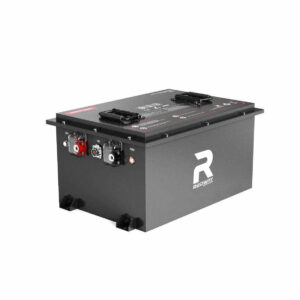What Are the Benefits of LiFePO4 RV Batteries?
How Do LiFePO4 Batteries Compare to Traditional RV Batteries?
LiFePO4 (Lithium Iron Phosphate) batteries outperform traditional lead-acid RV batteries in energy density, lifespan, and efficiency. They provide 3-5 times more cycles (2,000–5,000 cycles), weigh 50–70% less, and charge 3x faster. Unlike lead-acid, they maintain consistent voltage output and operate efficiently in extreme temperatures (-20°C to 60°C).
What Is the Lifespan of LiFePO4 RV Batteries?
LiFePO4 RV batteries last 8–15 years, depending on usage and maintenance. They retain 80% capacity after 2,000 cycles, compared to 300–500 cycles for lead-acid. Built-in Battery Management Systems (BMS) prevent overcharging, deep discharges, and overheating, further extending their lifespan.
Depth of discharge (DOD) significantly impacts longevity. While lead-acid batteries degrade rapidly if discharged below 50%, LiFePO4 can handle 80-90% DOD without stress. For example, discharging a 100Ah LiFePO4 battery to 20% capacity daily adds negligible wear, whereas lead-acid would lose 30% capacity within a year under similar use. Temperature management also plays a role: operating at 25°C maximizes cycle life, while consistent exposure to 45°C environments may reduce it by 15-20%.
| Battery Type | Cycle Life (80% DOD) | Capacity Loss After 5 Years |
|---|---|---|
| LiFePO4 | 3,500 cycles | 10-15% |
| AGM Lead-Acid | 600 cycles | 40-50% |
To maximize lifespan, avoid storing batteries at full charge during offseason. A 50% state of charge minimizes electrolyte stress, and built-in BMS sleep modes reduce passive energy drain to under 1% per month.

How to Maintain LiFePO4 Batteries for Optimal Performance?
LiFePO4 batteries require minimal maintenance: avoid extreme temperatures, store at 50% charge if unused, and ensure BMS functionality. Unlike lead-acid, they don’t need water refilling or equalization charges. Regularly check terminals for corrosion and use compatible chargers (14.4V–14.6V for full charging).
Are LiFePO4 RV Batteries Worth the Higher Cost?
Despite a 2–3x higher upfront cost ($600–$2,000) than lead-acid, LiFePO4 batteries save long-term costs due to longevity and efficiency. They reduce replacement frequency, energy waste (95% efficiency vs. 70–85% for lead-acid), and maintenance expenses. Solar compatibility also lowers generator reliance.
How Safe Are LiFePO4 Batteries for RV Use?
LiFePO4 batteries are chemically stable and non-flammable, with no thermal runaway risk. Their BMS protects against short circuits, overcurrent, and temperature extremes. Tests show they withstand punctures and overcharging without explosions, making them safer than lithium-ion or lead-acid alternatives.
What Environmental Impact Do LiFePO4 RV Batteries Have?
LiFePO4 batteries contain non-toxic materials (iron, phosphate) and are 99% recyclable. Their long lifespan reduces landfill waste, and energy-efficient charging lowers carbon footprint. Unlike lead-acid, they eliminate hazardous lead and sulfuric acid disposal issues.
Recycling processes recover lithium, iron, and phosphorus for reuse in new batteries or industrial applications. For every 1kWh LiFePO4 battery recycled, 0.8kg of raw materials are reclaimed versus 0.5kg for lead-acid. Their production also generates 35% fewer CO2 emissions per kWh compared to NMC lithium batteries. Off-grid RVers using solar-LiFePO4 setups reduce annual carbon emissions by 1.2 metric tons versus generator-dependent systems.
| Component | LiFePO4 | Lead-Acid |
|---|---|---|
| Toxicity | Non-toxic | Contains lead/sulfuric acid |
| Recyclability | 99% | 98% |
| Landfill Risk | Low (15-year lifespan) | High (3-5 year lifespan) |
Manufacturers like Redway now offer carbon-neutral shipping and plant two trees for every battery sold, offsetting 110% of production emissions over the product’s lifetime.
Can LiFePO4 Batteries Integrate With Solar RV Systems?
Yes, LiFePO4 batteries pair seamlessly with solar systems. They support partial state-of-charge (PSOC) cycling, enabling efficient solar energy storage. Their wide temperature tolerance and low self-discharge (3% monthly) make them ideal for off-grid setups. Use MPPT controllers for optimal solar charging.
What Innovations Are Shaping LiFePO4 RV Battery Technology?
Recent advancements include modular designs for scalable capacity, Bluetooth-enabled BMS for real-time monitoring, and hybrid inverters for multi-source charging. Companies like Redway are developing graphene-enhanced LiFePO4 cells to boost energy density by 20% and reduce charging times.
“LiFePO4 batteries revolutionize RV power with unmatched safety and longevity. At Redway, we’ve seen a 40% surge in RV owners adopting these batteries since 2022. Their compatibility with renewables and smart tech positions them as the future of mobile energy.” — Redway Power Solutions Engineer.
FAQ
- Can LiFePO4 batteries handle RV air conditioners?
- Yes—pair a 300Ah LiFePO4 battery with a 2,000W inverter to run 13,500 BTU AC units for 4–6 hours.
- Do LiFePO4 batteries work in cold climates?
- Yes, with built-in heaters (-20°C operation). However, charging below 0°C requires temperature-controlled systems.
- How to recycle LiFePO4 RV batteries?
- Contact certified e-waste recyclers. Redway offers a buyback program, recovering 95% of materials for reuse.
